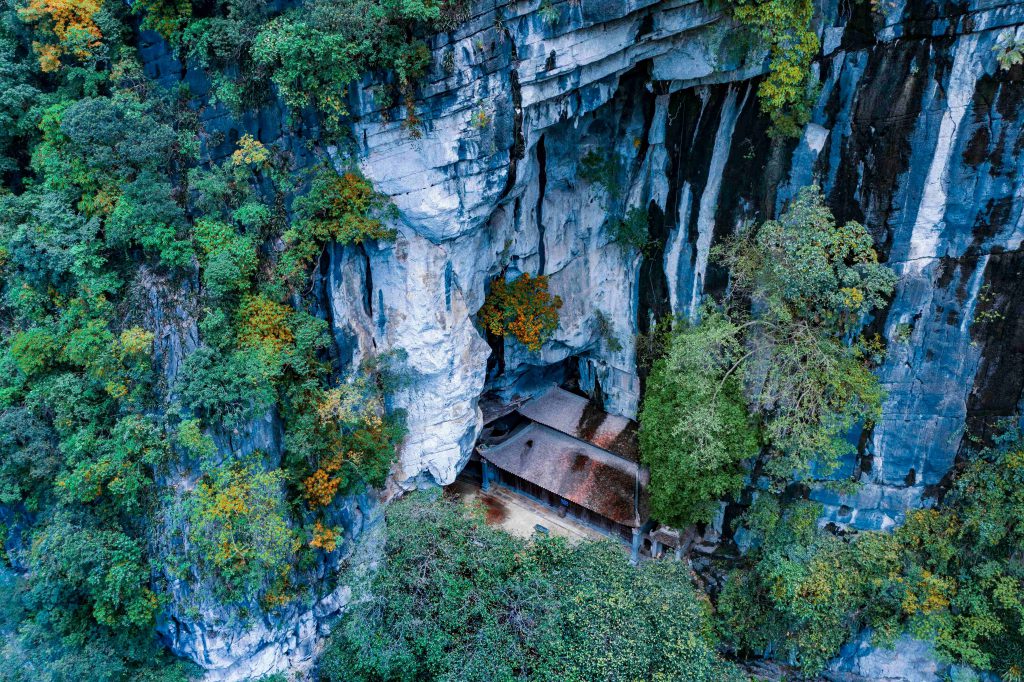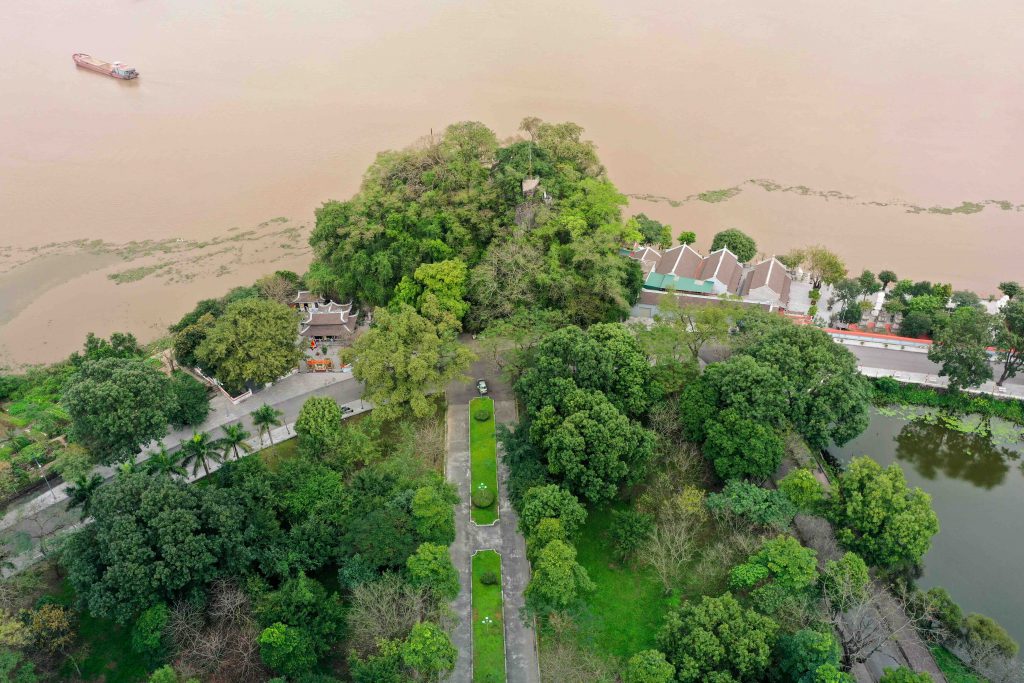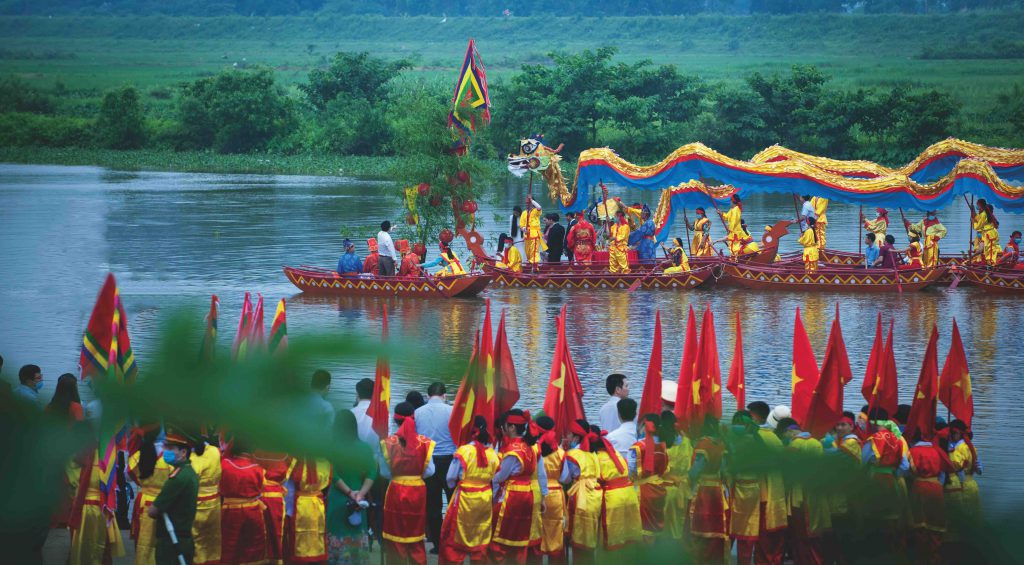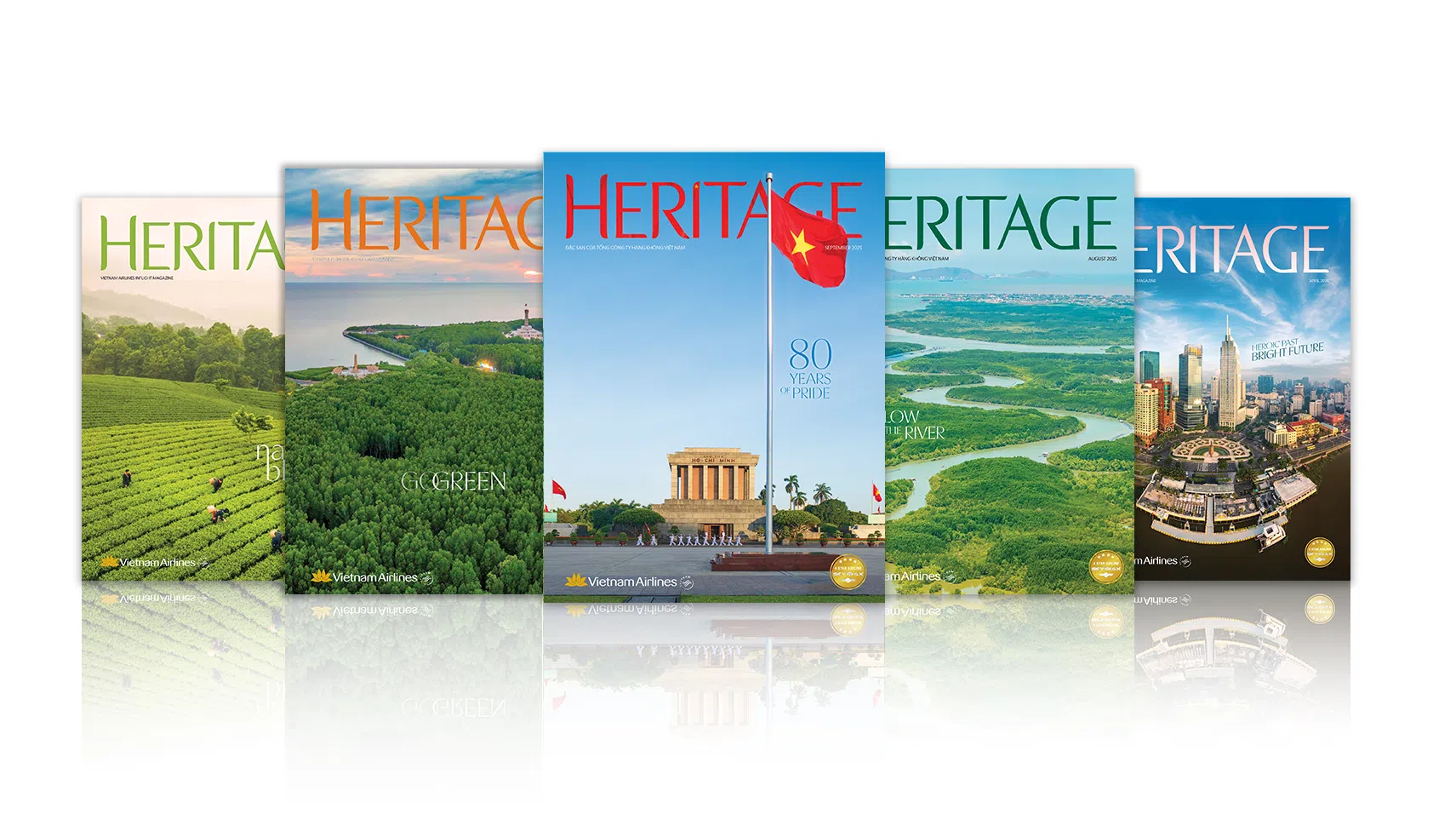Story: Dr. Vu Thi Hang
Photos: Amachau
Natural wonders intertwine with archaeological, historical, artistic, and architectural monuments in Hoa Lu, the nation’s ancient capital in Ninh Binh Province.

In the 10th century, Hoa Lu became the first capital of Vietnam’s centralized feudal state, linked to two national heroes – Dinh Tien Hoang (924–979) and Le Dai Hanh (941–1005) – who unified the realm and repelled foreign invaders.
People of old cleverly used the rugged terrain to build citadels and ramparts, with limestone ranges encircling Hoa Lu like a formidable natural wall. In the 13th century, the Tran dynasty also took advantage of this landscape to establish the Vu Lam royal retreat, a strategic stronghold against the invading Yuan-Mongol armies.
Today, the gilded palaces of the Dinh and Early Le dynasties are gone, and the grandeur of Vu Lam – once tied to the Tran kings’ embrace of monastic life and the flourishing of Buddhism – has faded. Yet the majestic mountains, winding rivers, ethereal grottoes, and enduring cultural, historical, and architectural legacies continue to shine.
At the heart of Hoa Lu stand the Temples of King Dinh and King Le, reputedly built on the foundations of former Ly era palaces and restored by successive kings. This complex’s most distinctive artistic imprint dates to the Later Le, in the late 17th century. Both temples follow the traditional noi cong ngoai quoc layout, with inner structures forming the character 工 and outer enclosures forming 国. Approaching roads and pathways are paved to form the character for “king” (王). Remarkably, many woodcarvings and decorative artworks have been preserved in the Temple of King Dinh, standing as exquisite examples of 17th-century religious and devotional architecture in Vietnam.

The complex preserves precious artifacts recognized as National Treasures, including a long sang – a dragon-carved stone throne-bed symbolizing royal authority, and sets of phu viet – ceremonial axes that are emblems of sovereignty. Behind the twin temple complex rises the Phi Van Range, as graceful as a cloud crossing the sky. Directly before the Temple of King Dinh stands saddle-shaped Ma Yen Mountain, with the mausoleum of King Dinh at its peak and the mausoleum of King Le at its foot.
One of Ninh Binh’s most celebrated landmarks stands on the slope of Bich Dong Mountain in Dam Khe Trong Village, Nam Hoa Lu Ward. Known as “Nam thien de nhi dong” – the “second finest grotto under the southern sky,” after Huong Tich Cave in Hanoi – Bich Dong Pagoda is surrounded by mountains, grottoes, waterways, rice fields, and lush greenery. The name “Bich Dong” (Jade Grotto) was bestowed by Lord Trinh Sam (1767–1782). Built of ironwood with tiled roofs and gracefully upturned eaves, the pagoda blends seamlessly with the mountain and grotto, creating a harmonious whole of striking natural beauty.
From Bich Dong, visitors can easily reach Tam Coc Caves by boat from Van Lam or Dam Khe Wharf. Autumn is the ideal season for the journey, when the water turns a deep, clear green, cliffs glow with golden sunlight, and the air is cool and crisp. Tam Coc, meaning “Three Caves,” includes Hang Ca, Hang Hai, and Hang Ba. Here, nature’s grandeur is fully revealed in layers of stalactites cascading from the ceilings, their rippling forms shimmering with a phosphorescent glow as light reflects off lamps and the moving water.

No less enchanting than Bich Dong is Dich Long Grotto, located southwest of Hoa Lu. Captivated by its extraordinary beauty, Emperor Minh Mang honored it with the inscription “Nam thien de tam dong” – “the third finest grotto under the southern sky.” Here, the natural setting has been skillfully integrated into architectural works, while the temples and shrines within enhance the grotto’s sacred vitality.
Within the Dich Long Pagoda complex stands a shrine to Nguyen Minh Khong, a Ly dynasty (11th – 12th centuries) monk renowned for performing miracles. Beyond this shrine, 100 stone steps ascend to the cave’s entrance. Inside, two connected caverns – Sang (Bright) and Toi (Dark) – are adorned with stalactites in a variety of shapes, from “an elephant drinking from a jar” and “a tiger lapping at a vat” to “a fish raising its fins” and “a dragon curling in water.” Nearby lies a deep chasm with a path that descends to the “netherworld” or ascends to the “way to heaven,” an open trail leading directly to the mountain summit.
Serving as an outer bulwark and forward outpost of the Hoa Lu capital, Thien Ton Grotto is located at the foot of Dung Duong Mountain in Da Gia Hamlet. According to legend, King Dinh Tien Hoang once received foreign envoys here. Stalactites hang abundantly from the cave ceiling, their shapes fantastical and varied. Thien Ton honors not only the Buddha but also Tran Vu (Zhenwu), the Taoist northern guardian deity, who in Vietnam is believed to exorcise malevolent forces, tame the waters, and protect agrarian communities.
To the north, Non Nuoc Mountain rises as another forward outpost of the Hoa Lu capital. Modest in height at roughly 100 meters, it is mirrored in the river below. In the 14th century, Tran-era scholar Truong Han Sieu compared its shape to a blue-winged Indochinese Roller (Coracias affinis) swooping to bathe in the Day River, giving it the name “Duc Thuy.” Over forty rock-cut inscriptions (ma nhai) remain on Non Nuoc’s cliff faces, including thirty-seven in Han-Nom script, dating from the 14th to the 20th centuries. These invaluable inscriptions shed light on the histories, religions, arts, and daily lives of past generations, and this distinctive trove of Han-Nom documentary heritage is being considered for recognition as part of the world’s documentary heritage.
The lands, rivers, and mountains of Hoa Lu are steeped in a magnificent chronicle – at once poetic, mysterious, and vividly alive. Beyond marveling at its majestic landscapes, visitors can explore ancient tales and renowned sites, created by a hospitable people and nurtured by traditions of patriotism and a deep desire for freedom and peace.










